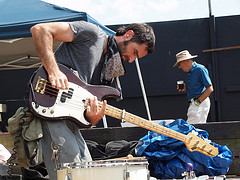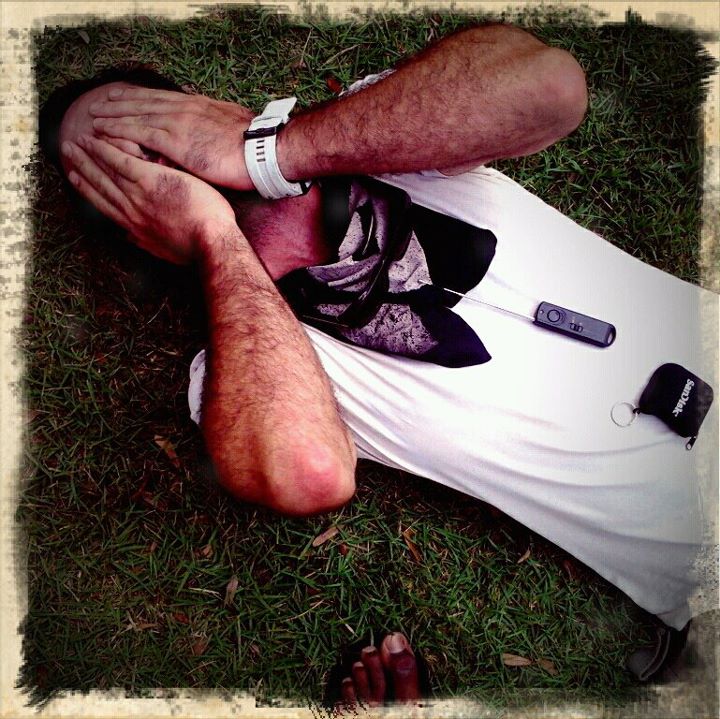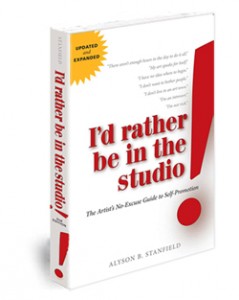OK…. like most of my posts, this is WAY LONGER than blog posts are supposed to be, but here goes anyway. Any brevity-gifted folks out there, your advice is super-welcomed!
This last Friday, I took part in “Meltdown to Drummer’s Night” and got to thinking about how making art for money influences the art itself.
“Meltdown” was a unique temporary installation in the central park of Sarasota. The brainchild of local creativity catalyst John Lichtenstein, “Meltdown” as an experience was something to remember and write about. At the same time, it sparked me thinking even more about a on topic about which I’ve recently mused repeatedly, heard passionate debates, and read some potent commentary:
As an artist, is it possible to remain purely creative when we’re also aiming to make a living at it? Or is “true creativity” only possible when one does “art for art’s sake,” all on its own?
The following is an attempt to unpack SOME of that thinking…
First, a little on “Meltdown to Drummer’s Night.”
In a carefully orchestrated act of performance/love?, John and some of his friends placed a block of ice containing a poster for “Drummer’s Night,” placed in Five Points Park to melt. They set up cameras in various locations and programmed them to take time-interval shots throughout the melting process and to simultaneously capture what happened around the ice-block. As John explained to me weeks before the event, part of this involved capturing what goes on in our public spaces–or, what doesn’t go on.
The day of “Meltdown,” John and Marty, a local photographer and friend of John’s, were on full-duty, talking to observers, keeping watch on the equipment, taking pictures themselves… for the full 24+ hours it took for the ice to melt. And before that, I know that countless hours of calculation and effort went into making the event happen–figuring out how and where to place a source of electricity near the ice-block, promoting the [promotional] event, transporting the block, etc.
John had asked me a couple weeks prior to capture the event with a pen and ink drawing of the scene. I agreed to volunteer. It would be a good chance to be part of an experiment and also develop a skill–live landscape/person drawing–without the pressure of delivering a professional product. So, I was there most of the day and got to witness a number of interactions–between people and the ice, John and the people, and the people and each other as they made sense of or just took in the scene.
Many of the people who wandered up had trouble grasping the project’s spontaneous, non-profit-making nature. One woman commented. “Some people will do anything to promote their project.” From what I’ve personally witnessed, this observation that seems to miss the mark of John’s actual motivation, both in this project and others like The End of the Dial Tone. That is, the motivation to do creative things for no other end than… to do creative things. To experiment, interact, play–to jump in with no more than a starting idea and question… “What would it be like if…” In fact, after the woman left there was a conversation about it among the crew, and John shared the thought that once you bring money into it, you lose the purity.
~
All-in-all, I loved being part of this project. I loved being part of the “what if?” and getting that answered for myself. I enjoyed watching people marvel at the beauty of the ice both in day light and as the darkness came and the block was lit from different angles. I enjoyed seeing how people chose to interact and pose with the ice–putting their faces behind it, sitting on it, licking it (oh yeah, that was me!). I enjoyed trying my hand at drawing a landscape live and stretching my abilities… even if my picture didn’t get completed.
I wholeheartedly embrace the concept of a project designed with the experience itself as the primary goal. But, the one thing that keeps bugging me is a tension between my own sensibility as an artist and citizen, and the comment John made about money-motive ‘polluting’ creative projects… So I ask:
When ‘money-making’ becomes part of a creative activity, does it kill the activity’s creative spirit? – or – What changes when money-making becomes part of the creative process/project? Is this change inherent in the inclusion of a profit goal in the activity, a habit we slip into but could avoid with practice, or something else?
– and –
What are the repercussions on working artists and society as a whole if we hold to the belief that a profit goal pollutes the spontaneity and creative freedom that most of us feel is the soul of good art–‘art for art’s sake’?
~
I’ll start with where I come from. For me, the decision a year ago to try and seriously earn money through making beautiful art has been a valuable step. It has also posed plenty of challenges and uncomfortable tensions, including clear encounters with a certain pressure once money is introduced to stay within traditional boundaries and not experiment too much. It’s also hard to summon up the courage and confidence to “sell myself” and to carry out the actions and sometimes very mundane tasks required to do so.
Despite these tensions, I keep concluding that aiming to make money with art CAN be a good thing… it just takes an inner re-alignment of certain values and attitudes I’ve inherited.
Many months ago I got a free ticket to see a dance by Twyla Tharpe, performed by the Sarasota Ballet (of which two good friends are part). I often have trouble resonating with a lot of modern dance, but this show got me. It lured me in, seduced, surprised, entertained and inspired me with highly creative and original patterns of movement, plays with light and setting, music-movement combinations, and that ‘something’ you can never quite put your finger on about a creative thing–the spirit of it went into me and made something buzz. I would personally label this “Great Art.”
I learned later that the choreographer has written a book called “The Creative Habit.” Curious about what the creator of such a stunning performance would have to say, I bought it. She opens by exploring what she calls the myth of the spontaneous artistic genius. Mozart, for instance, is commonly celebrated as a spontaneous genius, who produced timeless works of music from a magical, mysterious creative zone in unpredictable moments of great inspiration and epiphany. Yet, thanks to films like “Amadeus,” we rarely associate with Mozart the fact that his capacity to produce these timeless works was born of a child- and adult-hood of structured cultivation.
This structure was initiated by his father who was a composer and had the little musician practicing for hours from the time he could reach the piano keys. As an adult, Mozart created structure for himself as well, sometimes playing until his hands bled, and eventually they became deformed from constant practice. He was not always producing timeless works of genius during these routine sessions–rather, he was doing ‘the work’ with rhythm, intention, what some might consider dull, ‘uncreative’ consistency. This consistency became the soil from which truly creative ideas could not only emerge but grow into full-blown masterpieces that would move humanity for centuries to come.
What’s my point? In a roundabout way, I’m saying, as Twyla says, that many of the things we associate with ‘anti-creativity’ such as structure, consistency and self-discipline are in fact the necessary soil for any artist to cultivate the skill and give birth to art (/music/performance/etc) that fully channels their inner creative potential. Making money fits into this as one of those things we consider anti-creative. So if, as Tharp suggests, seemingly dull things like daily practice and prepatory ritual are helpful to the artist, might the profit motive in some instances help, not hinder us?
Artist coach Alyson Stanfield, offers another good point in her book “I’d Rather be in the Studio; the Artist’s No-Excuse Guide to Self-Promotion.” She acknowledges the pressure experienced by artists who dream of making a living on their talent to “sell out” for the sake of money. We can easily slip into a mentality where we are “producing for” something outside ourselves, for what we expect people to like. In so doing, we let go of our authenticity.
Stanfield argues that artists don’t need to feel beholden to pleasing everyone. If we remain true to our innermost creative voice, what moves us will CERTAINLY move other human beings. That is the nature of art. However, it’s up to us (or, maybe, our agents if we hire one) to FIND those who are moved by what we do, and cultivate relationships with them so they can support us to keep creating that thing they, and we, love.
In the spirit of blog culture, I’ll continue this in another blog as “Part II.”
What do you think so far? Do you think a profit-motive and true creative spirit/product can co-exist? Have you found a way to make this happen, or know someone who has?
~





